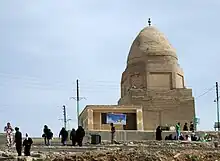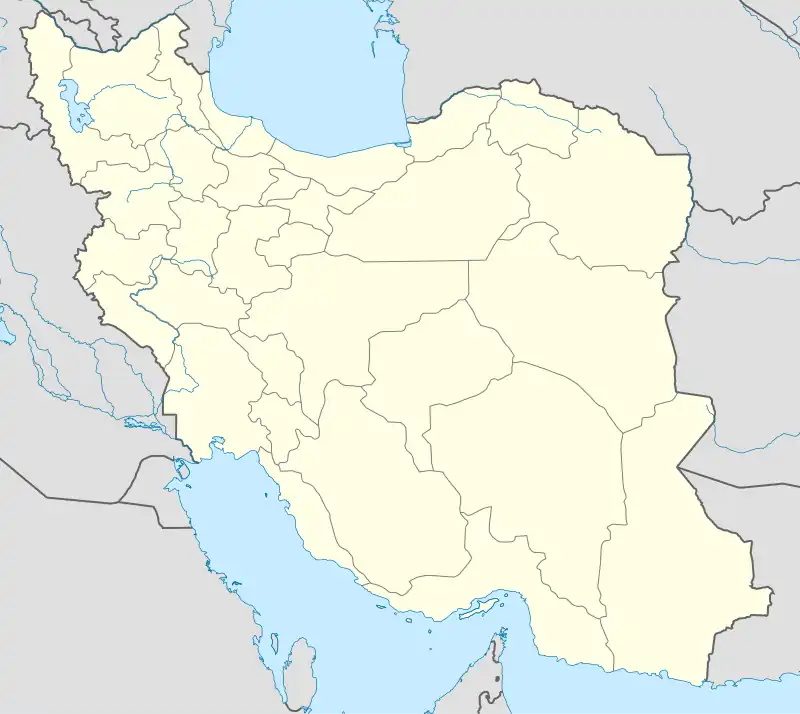| Tomb of Wais-e Nāzār | |
|---|---|
 | |
| Religion | |
| Affiliation | Sunni |
| District | Brimavand |
| Province | Between Kermanshah Province and Kurdistan Province |
| Location | |
| Location | Kermanshah, Iran |
 Shown within Iran | |
| Territory | Between Ravansar County and Kamyaran |
| Geographic coordinates | 34°31′38″N 46°50′57″E / 34.5271293°N 46.8492279°E |
| Architecture | |
| Type | mausoleum |
| Style | Seljuk |
| Materials | brick |
The Tomb of Wais-e Nāzār (Persian: آرامگاه ویس نازار) is a historical mausoleum in Kermanshah, Iran.[1] It is located on the top of a hill, 35 kilometres from the city of Ravansar.[1] The deceased person entombed in the mausoleum is traditionally attributed to be Owais al-Qarani, one of the Tabi'een who died in the Battle of Siffin.[1] It is number 1054 on the list of national monuments of Iran.[1]
History
The mausoleum was first constructed during the Seljuk period. In the 21st century, the mausoleum was completely refurbished and renovated. A Hussainiyah was attached to the tomb, and other facilities like a bazaar and a skydiving center were built in the areas adjacent to the tomb.[2] In 1954, the mausoleum was designated as a national heritage monument.[2]
Currently, the tomb is majorly visited by the Kurds of Iran, who are usually Sunnis.[2]
The identity of the entombed
The geographer, Hamdallah Mustawfi, writes that the grave of Owais al-Qarani was located near Kermanshah after he died in the Battle of Siffin.[2] But due to Owais also having a tomb attributed to him in Raqqa, Syria within the grounds of the now-destroyed Uwais al-Qarni Mosque, the identity of the entombed here is contested.[1][2] An alternative theory suggests that the mausoleum was built for one of the mystics of the Uwaisi Sufi order, who had a very similar name.[1]